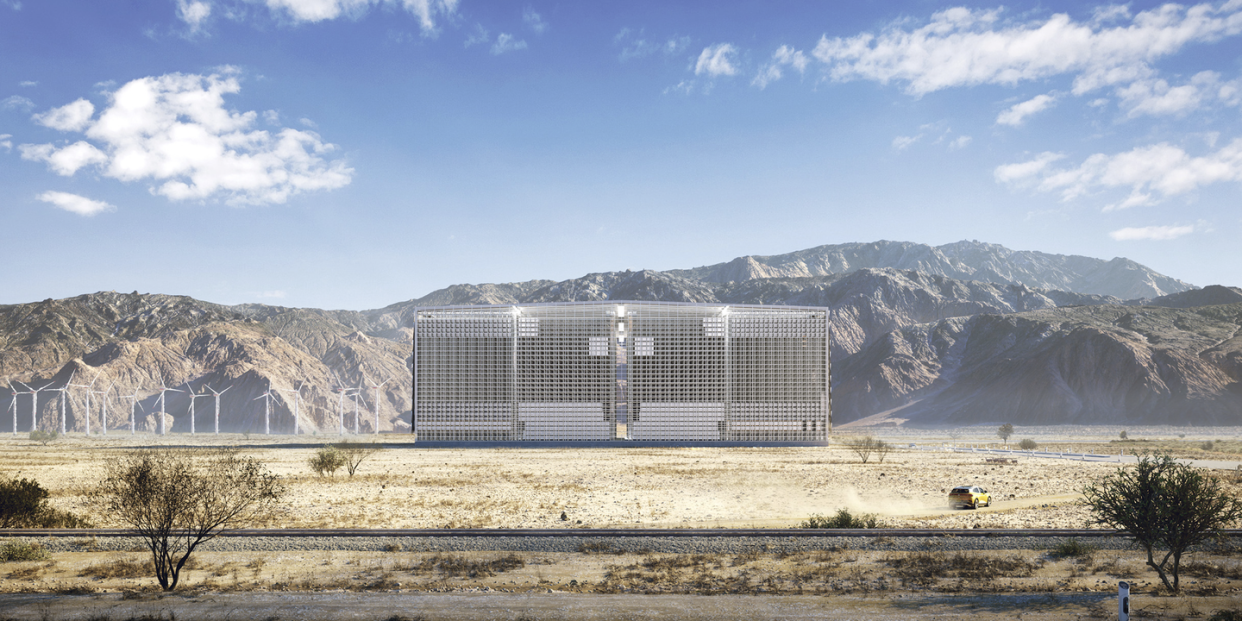Gravity—Yes, Gravity—Is the Next Frontier for Batteries

When renewable energy solutions wane from a lack of wind, tide, or sun, old-fashioned gravity can fill the gap to create energy.
Using suspended weights in times of energy need, the gravity-based solution drops the weights to create energy.
Whether modular buildings or existing underground shafts, infrastructure needs for gravity-based energy projects aren’t a heavy lift.
Gravity never goes away—and that’s a powerful tool in the world of renewable energy, often marred by the ebb and flow of wind, tide, and sunshine. And this gravity-based energy isn’t a concept for the future, but is already taking root: Switzerland-based Energy Vault has multiple projects under construction employing this technology, and Scotland’s Gravitricity (not just a clever name) has built a successful prototype and has plans to go commercial.
The basic concept calls for excess renewable energy to help draw a weight atop a tower or shaft. That weight remains suspended in place until there is a downturn in renewable energy production, allowing the company to slowly drop the weight and create electricity as gravity pulls it down. This electricity can help fill in the gaps left when the wind stops whipping or the sun stops shining.
🔋 You love energy. So do we. Let’s nerd out over it together.
These gravity-based solutions are built on the physics and mechanical engineering fundamentals of pumped hydroelectric energy storage, which uses two water reservoirs at different elevations to create power as the water moves from one reservoir to the other through a turbine. But in this case, you replace the water with blocks that can be made from a variety of recycled materials.
Energy Vault already has a 20-story tall tower in Switzerland that uses cranes to lift 33-ton blocks. Now, the company is rolling out its “EVx” system with thousands of weights on a trolley complex to create 100 megawatt hours (MWh) of power per day. Energy Vault’s EVx is on order from countries across the globe, including China, which began construction of the system back in March. A new project in Louisiana announced last month will employ a 200-MWh storage capability using the EVx system in the production of sustainable aviation fuels.
Meanwhile, Gravitricity’s initial prototype involved a 49-foot-tall steel tower suspending two 22.5-ton iron weights via an electric motor before dropping them down slowly to create 250 kilowatts of power. “We proved that we can control the system to extend the lifetime of certain mechanical components, like the lifting cable,” Jill Macpherson, Gravitricity’s senior test and simulation engineer, tells the BBC. “The system is also designed so that individual components can be easily replaced instead of replacing the entire system throughout its lifetime. So, there’s real scope for having a decades-long operational life.”
“Finding low-cost, long-life ways to store renewable power will be crucial in the world’s journey to net zero,” Charlie Blair, managing director at Graviticity, says in a press release. He says the multi-weight concept was already proven, demonstrating the efficiency of the weight system and the ability to “ramp up to full import or export power in less than a second.”
“A Gravitricity system with multiple weights offers a lower cost per MWh of energy stored—more weights give more mass or MWhs whilst the number of hoisting systems, which forms a substantial part of asset cost, does not increase,” he says.
Graviticity now plans to seek out decommissioned coal mines across the world to use the already-in-place shafts to create the gravity-fed power.
You Might Also Like

